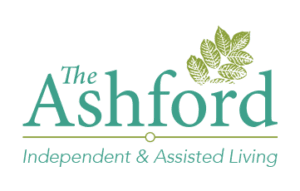5 Dietary Guidelines for Senior Nutrition
When you think of preserving long-term health for your parent or loved ones, a few things may come to mind.
Maybe you think of the various medications that keep their ailments and chronic conditions under control.
Or taking them to their monthly doctor appointments.
Or perhaps it’s encouraging them to attend a weekly exercise class.
Although there is certainly a place for these things in your mother or father’s long-term health plan, there’s one area that can make a huge difference when it comes to healing and preventative care.
A Clinical Interventions in Aging study found that “16% of those >65 years and 2% of those >85 years are classed as malnourished,” and the study predicts these figures to rise dramatically in the next 30 years.
In this post, we’re covering five senior nutrition tips and information that every adult child of an aging parent should be aware of.
1. Seniors Need to Increase Their Intake of Calcium, Vitamin D, and B12.
Generally speaking, seniors need less calories than younger adults.
However, they need just as many nutrients, if not more.
This is because, as we age, our ability to absorb nutrients decreases.
Calcium, Vitamins D, and B12 are particularly important for seniors, because…
- Calcium is key for maintaining strong bones.
- Vitamin D helps the body better absorb calcium and fight infection.
- B12 is good for making red blood cells and maintaining proper function of nerve cells.
Whether it be taking supplements or adding in nutrient-rich foods for meals prepared at home, it’s important to take proactive steps to ensure your parent won’t be deficient in these nutrients and vitamins.
2. Seniors Should Be Aware of Food Interactions with Their Medication.
(Source)
Certain prescribed drugs can affect your parent’s appetite, digestion, and nutrient absorption.
Additionally, medications can have negative interactions with various foods.
Therefore, it’s important you educate yourself and your parent about what to expect and avoid while he 0r she is taking medications.
Fortunately, caregivers and other staff members at assisted living communities remain proactive and mindful when it comes to ensuring residents’ diets comply with their medication requirements.
This way, you and your parent can rest easy knowing you won’t risk negative consequences of combining foods and medication.
3. Seniors Need to Stay Hydrated.
According to Agingcare.com, “older adults are more susceptible to fluid and electrolyte imbalances.”
Additionally, our ability to both conserve water and sense thirst diminishes as we grow older–the perfect recipe for dehydration.
Making the move to an assisted living community can make a huge difference in this regard.
Professional and mindful caregivers are responsible to remind residents to stay hydrated throughout the day–adding an extra layer of reinforcement.
4. Older Adults Require Different Serving Sizes.
People at different stages of life will require different portion and serving sizes.
Older adults require less food bulk and calories than younger people.
For example, according to the National Institute on Aging, adults 50 and over should follow the following daily portion guidelines:
- Fruits: 1½ to 2½ cups.
- Vegetables: 2 to 3½ cups.
- Grains: 5 to 10 ounces.
- Protein foods: 5 to 7 ounces.
- Dairy foods: 3 cups of fat-free or low-fat milk.
- Oils: 5 to 8 teaspoons.
- Solid fats and added sugars (SoFAS) and sodium (salt): keep the amount of SoFAS and sodium small.
Although these are simply suggested guidelines and don’t need to be strictly adhered to, they are helpful when it comes to minimizing the chances of overeating.
5. Loss of Taste or Smell Can Affect a Senior’s Appetite.
As we age, our ability to taste and smell may become diminished–affecting our appetite and craving for food.
As the Mayo Clinic recommends, “If loss of taste and smell is a problem, experiment with seasonings and recipes.”
Utilizing this information can make a huge difference in your parent’s quality of life.
Luckily, for those that reside in an assisted living community, dining services make it easier to follow these senior nutrition guidelines.
At The Ashford assisted living communities, we provide excellent cuisine options served in a home-style setting.
We work hard to ensure that our culinary offerings are both delicious and meet the nutritional guidelines stated above.
Visit our communities’ dining rooms to learn more about how we can help your parent maintain high-quality nutrition!
Contact us today to schedule a tour of one of our communities…
- The Ashford on Broad.
- The Ashford of Mt. Washington.
- The Ashford at Sturbridge. (opening in fall 2018).




 (Source)
(Source)


